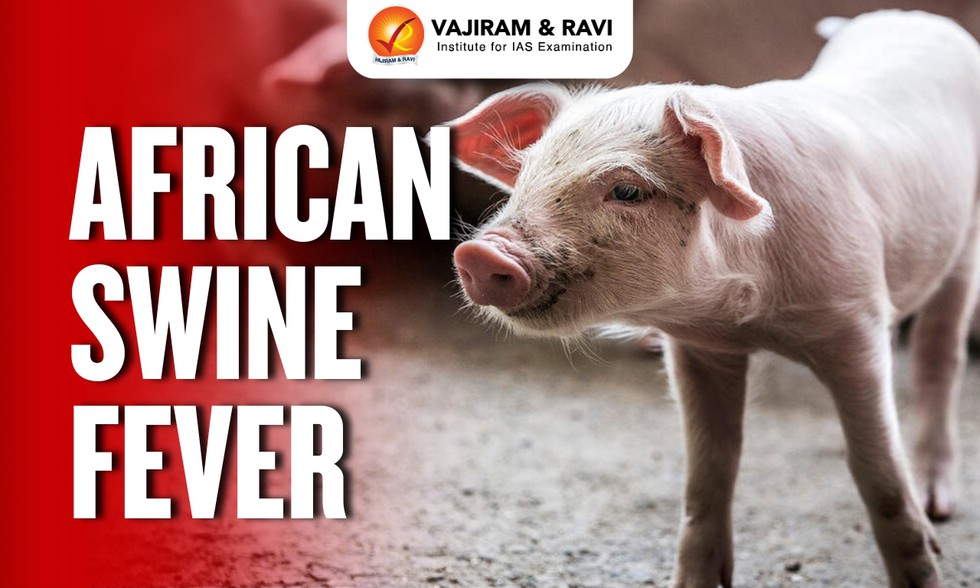About African Swine Fever (ASF):
- It is a highly contagious and hemorrhagic viral disease affecting pigs and wild boar.
- The disease does not infect humans (not zoonotic) or other livestock species.
- ASF causes a destructive effect on piggery due to high morbidity and mortality (up to 90-100%).
- Originally found throughout sub-Saharan Africa, ASF is now prevalent in many countries in Europe, Asia, and Africa.
- India notified the first outbreak of ASF virus in January, 2020 in the Northeastern States of Assam and Arunachal Pradesh.
- Transmission:
- The virus is highly resistant in the environment, meaning that it can survive on clothes, boots, wheels, and other materials.
- It can also survive in various pork products, such as ham, sausages, or bacon.
- Therefore, human behaviours can play an important role in spreading this disease.
- Infection can occur through direct contact between pigs or boars, but also, for example, through soft ticks in (sub)tropical regions, through contaminated materials or contaminated feed.
- Symptoms: The clinical symptoms can look very much like those of classical swine fever: fever, weak pigs, lack of appetite, inflamed eye mucous membranes, red skin, (bloody) diarrhea, and vomiting.
- Prevention: Currently, there is no treatment or vaccine available against ASF, so prevention by adopting strict biosecurity measures, such as culling the animals, is the only way to prevent ASF.
